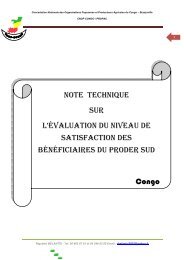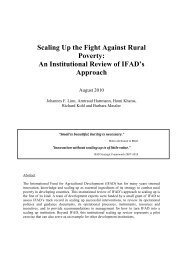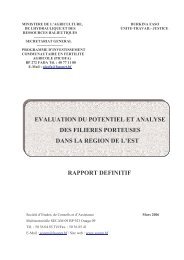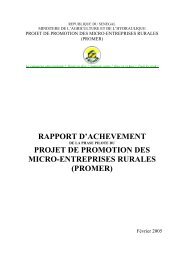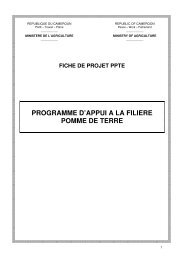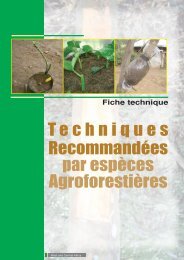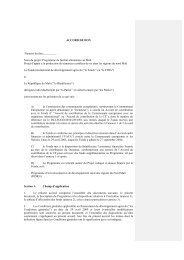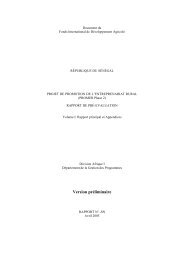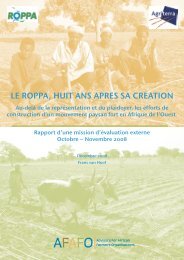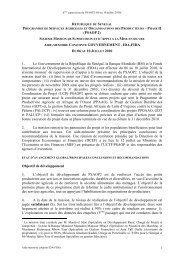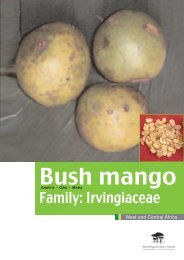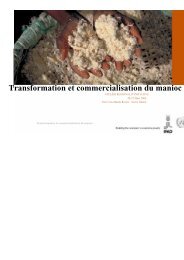CASSAVA OPPORTUNTIES IN NIGERIA - FAO.org
CASSAVA OPPORTUNTIES IN NIGERIA - FAO.org
CASSAVA OPPORTUNTIES IN NIGERIA - FAO.org
You also want an ePaper? Increase the reach of your titles
YUMPU automatically turns print PDFs into web optimized ePapers that Google loves.
Table 5-4 Number of Plants Required to Meet<br />
Estimated Demand<br />
Scale of Operation<br />
Market Small Medium Large World<br />
Food for urban 96 969 - - -<br />
Food for rural 29 992 - - -<br />
Food for export 12 500 - - -<br />
Food as flour 12 823 - - -<br />
Livestock chips 4 623 2 312 - -<br />
Livestock pellets - - 39 12<br />
Starch 4 589 - - 92<br />
Ethanol 1 145 57 29 2<br />
For the supply-chain to develop and survive there<br />
is a need to get the members of the supply chain<br />
to work together to assure that production,<br />
collection, delivery and processing activities are<br />
scheduled to work together. If key components of<br />
supply are ahead or behind schedule it is quite<br />
possible that the supply chain will fail.<br />
The number of small and medium processing<br />
plants is great and will likely be scattered across<br />
the country. The estimate for large and world<br />
scale processing plants is more manageable to<br />
fathom and it is for these plants that the following<br />
selection criteria was formulated.<br />
5.3 NEW <strong>IN</strong>ITIATIVES<br />
Suggesting the best production locations or best<br />
locations to set up a plant is a difficult task and the<br />
answer will change depending on the objectives<br />
and situations facing the person, persons or<br />
institution desiring to know the best location. A<br />
number of conditions are necessary for selecting<br />
production and/or processing areas. The main<br />
one being proximity to the user.<br />
Owing to data limitations, recommendations on<br />
the best site must be primarily limited to state<br />
recommendations. An approach is suggested<br />
which can be modified and adapted to different<br />
levels of aggregation.<br />
It is suggested that the selection of best cassava<br />
production sites are not necessarily the best sites<br />
for production. However, owing to the bulkiness of<br />
cassava and the need, at times, to process freshly<br />
harvested cassava, the distance between<br />
30<br />
production and processing sites may become a<br />
critical decision factor.<br />
The selection approach demonstrated is based on<br />
selected data contained in the Handbook. The<br />
selected data are considered to be indicators of<br />
the suitability of each state as a cassava<br />
production or processing site. Individuals can<br />
select their preferred indicators.<br />
For this study the following Table contains the<br />
indicators and the measures that were considered<br />
positive for production and processing sites.<br />
Table 5-5 Site Selection Variables and Related<br />
Indicators<br />
Production Positive<br />
Indicator<br />
Processing<br />
Positive<br />
Indicator<br />
Population<br />
Density<br />
Low, MLow<br />
Cassava<br />
Root Price<br />



